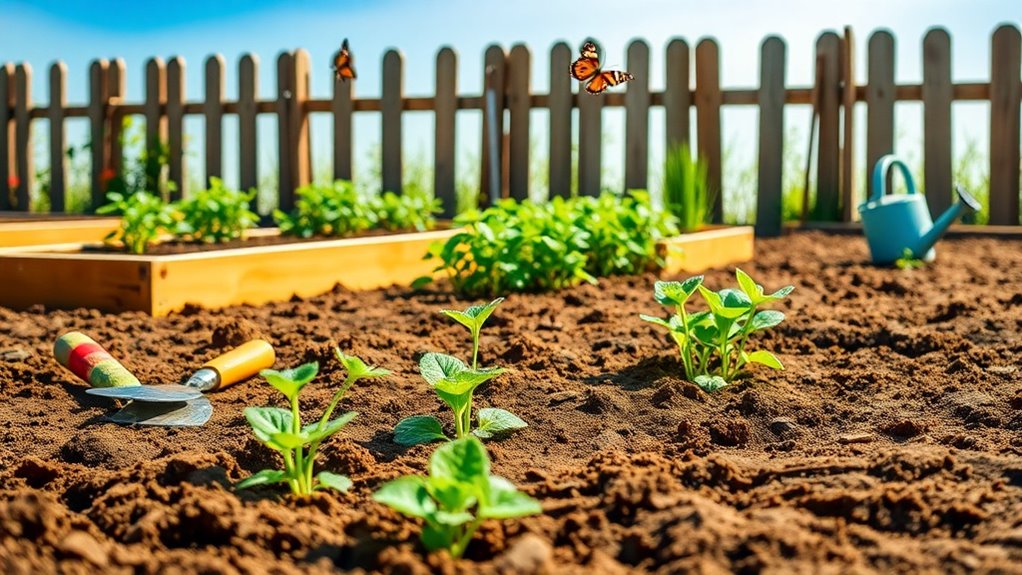The Ultimate Guide to Starting a Garden With No Experience
Starting a garden with little to no experience may seem daunting, but it’s achievable with the right approach. You’ll want to choose a location that gets ample sunlight and has proper drainage. From there, selecting beginner-friendly plants is key. Your soil’s preparation will determine plant health, so understanding soil types is crucial. How you water and care for your plants also plays a significant role. Let’s explore these fundamental aspects to ensure your gardening success.
Choosing the Right Location for Your Garden
When you’re choosing the right location for your garden, consider factors like sunlight, drainage, and accessibility.
For beginner gardening, aim for at least six hours of direct sunlight daily.
Ensure the soil drains well to prevent root rot, and select a spot that’s easily reachable for maintenance tasks.
This foundational step sets you up for success in your gardening journey. Additionally, learning about essential techniques for soil preparation will further enhance your garden’s productivity and health.
Selecting Suitable Plants for Beginners
After securing the right location for your garden, the next step is selecting suitable plants that will thrive in your environment.
Opt for native plants, as they adapt well and require minimal maintenance. Consider vegetables like tomatoes and herbs such as basil, which grow easily. Additionally, you might want to explore easy-to-grow herbs that are ideal for small spaces.
Always check your local climate zone and choose varieties suited to your specific sunlight, moisture, and space conditions.
Understanding Soil Types and Preparation
Here’s what you need to know:
-
Loamy Soil: Ideal blend for most plants.
-
Sandy Soil: Drains well, but may need nutrients.
-
Clay Soil: Retains moisture, but can compact.
-
Silty Soil: Nutrient-rich, but prone to erosion.
-
Organic Matter: Enhances soil quality and fertility.
Healthy soil can be identified by secret signs such as earthworm presence and a rich earthy smell.
Watering Techniques and Plant Care
Watering your garden effectively is vital for promoting healthy plant growth and preventing stress.
To ensure even moisture, water deeply and less frequently, ideally in the early morning. Use drip irrigation or soaker hoses for efficient water delivery, minimizing evaporation.
Monitor soil moisture with your finger; if it’s dry an inch down, it’s time to water. Adjust frequency based on weather and plant needs. Additionally, understanding efficient water use can help you make the most of your watering routine while conserving this precious resource.
Troubleshooting Common Gardening Issues
As you embark on your gardening journey, it’s essential to recognize that encountering issues is part of the process.
When you face challenges, here are common problems and solutions to consider:
- Yellowing leaves indicate overwatering or nutrient deficiency.
- Pests can be managed with organic sprays.
- Wilting might mean underwatering.
- Mold suggests poor air circulation.
- Stunted growth often results from inadequate sunlight.
- Common gardening mistakes can often lead to unexpected plant problems, so proactively addressing them is crucial.
Stay observant and adjust accordingly!

